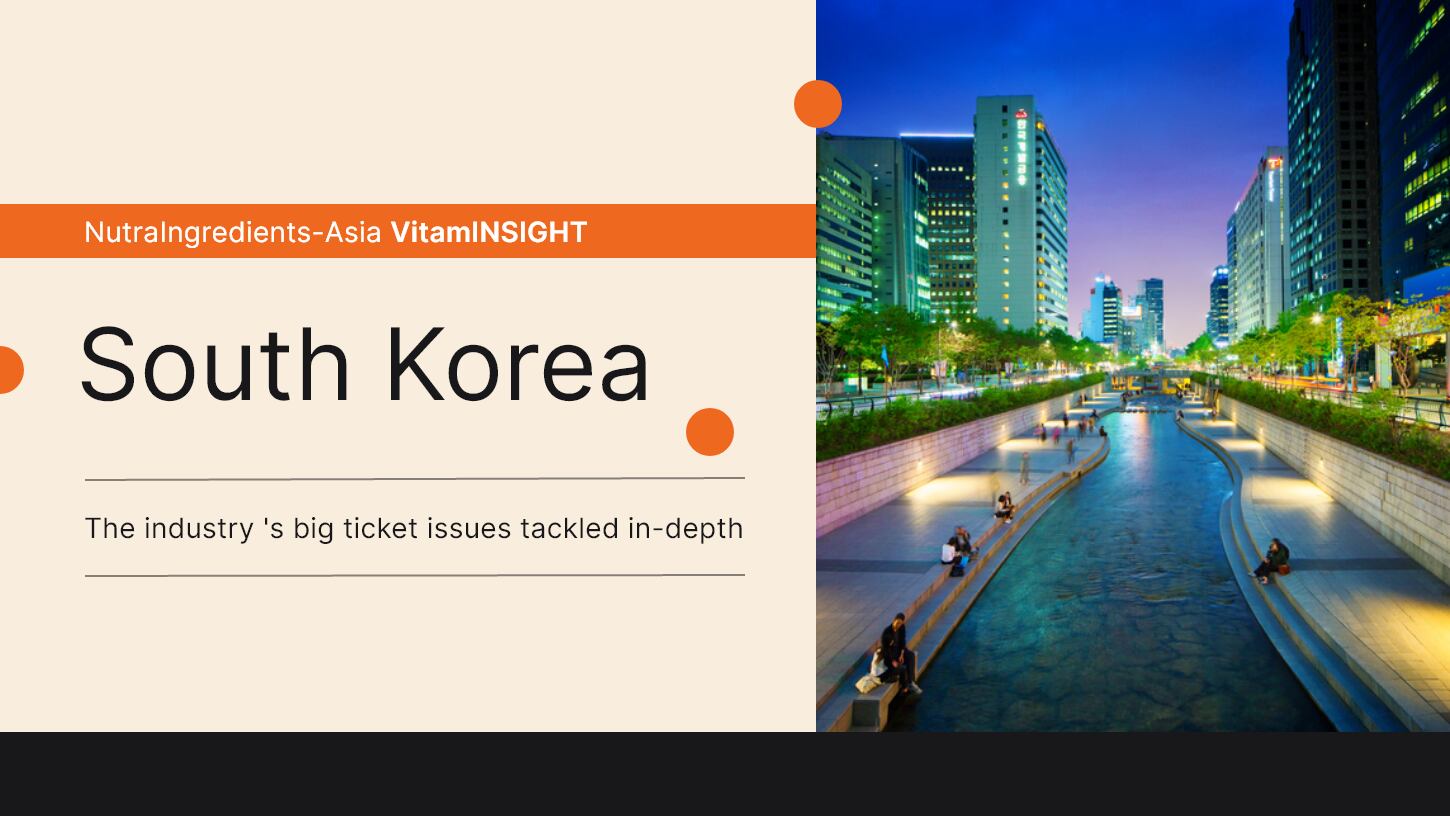Total exports of Korean health functional foods was up 15.4 per cent to reach a value of US$248.3m in 2023, according to the Ministry of Food and Drug Safety (MFDS).
China, Japan, and the US are some of the most attractive markets for Korean firms expanding overseas.
Kolmar BNH is one of the examples pursuing growth in China.
Observing that “foods as medicines” is an ongoing trend in China, the OEM manufacturer has been tapping on herbs familiar to Chinese consumers, such as Rehmanniae Radix or Dihuang, in formulating new products for immune support.
Korea Ginseng Corporation, known for red ginseng functional foods, is another example that is actively introducing its products globally.
It already has a presence in the US, the world’s biggest nutraceutical market, but it is also wooing emerging markets such as South East Asia.
In Indonesia for example, it has tied up with national volleyball star Megawati Hangestri Pertiwi to drum up publicity.
Before supplements, K-beauty and K-food have already made strides in the global stage with skincare and cosmetics giant Amorepacific and packaged food firm CJ CheilJedang paving the path for international recognition.
Latest data from the Ministry of Food and Drug Safety (MFDS) showed that South Korea’s cosmetics and skincare exports last year had exceeded the US$10 billion mark last year.
With increasing international presence of Korea’s health functional foods in recent years, we will look at the reasons for venturing overseas, where are the export hotspots, as well as how Korean consumer needs would differ from major markets such as the US in this series of VitamINSIGHTS.
Part I: Local market saturation and government support
Korean companies are venturing into overseas markets “more than ever” due to an increasingly saturated domestic market, Dr Frank Kim, president of health functional foods, cosmetics, and food regulatory consultancy firm SEAH Bio Solution told NutraIngredients-Asia.
“Korean health supplement companies are looking beyond domestic markets more than ever. One major reason is that the local market is becoming saturated, which means growth opportunities are limited.
Kolmar BNH’s CEO Kang Jun Young said previously that growth rate of South Korea’s health functional foods market was expected to slow down as the market matures.
He pointed out that four in five South Korean families already have the habit of taking health supplements, with each household spending approximately US$275 yearly.
Dong-A Pharmaceutical, which celebrated its 92nd anniversary last year, also started its exports business as domestic business has reached a “stable level of growth.”
“We have focused on the domestic market during the past 92 years. Now, we’ve reached a stable level of growth in South Korea and to achieve further growth, we will need to expand overseas,” said So-Hyun Kim, HealthCare Biz Brand Team 2 brand manager at Dong-A Pharmaceutical.
At Vitafoods Asia held in Bangkok last September, she said that China, Japan, and Southeast Asia were the company’s priority markets where it would focus on introducing its beauty-from-within and kids nutrition products.
The spread of K-pop and K-culture has also prepared the ground for exporting Korean goods overseas.
“At the same time, demand for Korean health products is booming overseas, especially in Asia, thanks to their reputation for quality and innovation.
“The global popularity of K-culture has also boosted trust in Korean brands, creating a favourable environment for exports,” added Dr Kim.
At the same time, the Korean authorities has been actively supporting local companies by educating them on global regulatory requirements, such as the updated New Dietary Ingredient (NDI) Reporting Guide as announced by the US Food and Drug Administration (FDA) last year.
Last August, the MFDS held the “K-Health Functional Food Global Expansion Strategy Conference” at COEX, Seoul to help local businesses advance overseas.
“The Ministry of Food and Drug Safety expects this conference to help excellent domestic health functional foods advance into overseas markets and announced that it will continue to strengthen technical support necessary to increase the international competitiveness of the health functional food industry,” it said.
The conference was held by the National Institute of Food and Drug Safety Evaluation at last year’s World Health Functional Foods and Raw Materials Exhibition.
Part II: Market hotspots
Perhaps due to its proximity, Asian markets are the hotspots for Korean companies searching for overseas opportunities.
Dr Kim pointed out that China was a top destination, while Japan was another country of interest due to its well-developed health supplement market.
“When it comes to target markets, several regions stand out. China is a top destination due to its proximity and strong interest in K-healthcare products.
“Japan, too, is a strong contender because of its existing demand for health functional foods,” he said.
Seoul-based health and beauty product distributor, Grace, is an example that has been actively expanding into Japan.
Just this month, the company announced that it would be expanding its distribution network across Japan by entering the convenience stores and drugstores – bringing its distribution footprint into over 20,000 stores nationwide.
Some of the convenience stores that it is working with include 7-11, Family Mart, and Lawson, while drugstores include Matsumotokiyoshi, Sundrug, Tsuruha, and Sugi Pharmacy.
Variety stores like Loft and Tokyu Hands are also included.
Beauty-from-within brand OWNIST which focuses on collagen and vitamins in the form of jelly and mixable drinks is one of the brands that it is distributing.
Aside from beauty, the company pointed out that products for diet and immunity have also seen a sharp increase in popularity in Japan.
It added that its ability to expand in Japan could be attributed to a few key factors.
Regulatory compliance is at the top of the list, as well as tailored, localised packaging and efficient logistics strategies.
It also runs an office at Shibuya that handles product sourcing, marketing, and consulting to help Korean brands enter the market.
In fact, although Japan is traditionally seen as a challenging market for overseas brands, the company believes that success in Japan could pave the way for broader expansion in Asia-Pacific.
Including Japan, the company also exports to 29 countries, including Dubai where Korean cosmetics are sought after.
On the other hand, South East Asian countries like Vietnam, Thailand, and Indonesia are also of interest to Korean companies, due to rising health awareness and economic growth, said Dr Kim.
For instance, red ginseng, which has been seeing a slowdown in domestic demand, is picking up in countries such as Vietnam.
Red ginseng is the largest health functional foods category in South Korea.
However, last year, its production output had shrunk by 21.2 per cent to KRW$464.bn (US$339.7m), which the MFDS said was due to a lower demand for immune health products post COVID-19.
Amidst the domestic decline, exports of red ginseng climbed 32 per cent to US$56.32 million, with demand mostly coming from China, Japan, and Vietnam.
Other than red ginseng, exports of calcium and vitamin E also delivered strong performance, with the former registering an increase of 416.6 per cent to US$25.9m and the latter growing by 576.6 per cent to US$5.01m.
Lastly, Dr Kim pointed out that recognition of Korean brands has been on the rise in the US while interest from Europe is mainly coming from Germany and the UK.
“The US is another key market with its well-established health supplement industry and growing recognition of Korean brands.
“And in Europe, especially in countries like Germany and the UK, the region is seeing increasing interest in premium Korean health products. These regions represent where Korean companies see the most growth potential and consumer interest,” he said.
Watch the following video as he tells us more.
Part III: Differences in consumer demands
The preference for specific dosage formats is perhaps an area that Korean companies expanding into overseas markets would need to pay attention to.
In South Korea, while it is common to consume powder sachet by pouring the contents into the mouth directly, this is not in trend in markets like the US.
This is according to the observations of Yanghee Paik, CEO of US-based Rael, a company that specialises in sanitary hygiene and women’s health products.
She noticed that while both markets were highly health conscious, the South Korean market would have a greater variety of product formats.
This has also impacted the ways the company designs products for the US and Korean market.
For instance, its inositol supplement sold in the Korean market is in the form of powder sachet stick for direct consumption - a dosage format which Yang said was common in the Korean market.
In the US, however, the usual practice is to dissolve powder into water and drink it, she said.
On the other hand, while gummies are a popular option in the US, the company has proceeded to launch capsules and powder products due to high sugar content in gummies. The company is also doing the same for its Korean business.
She added that the company would be exploring different novel formats and new ideas to make the products even more convenient for use.


